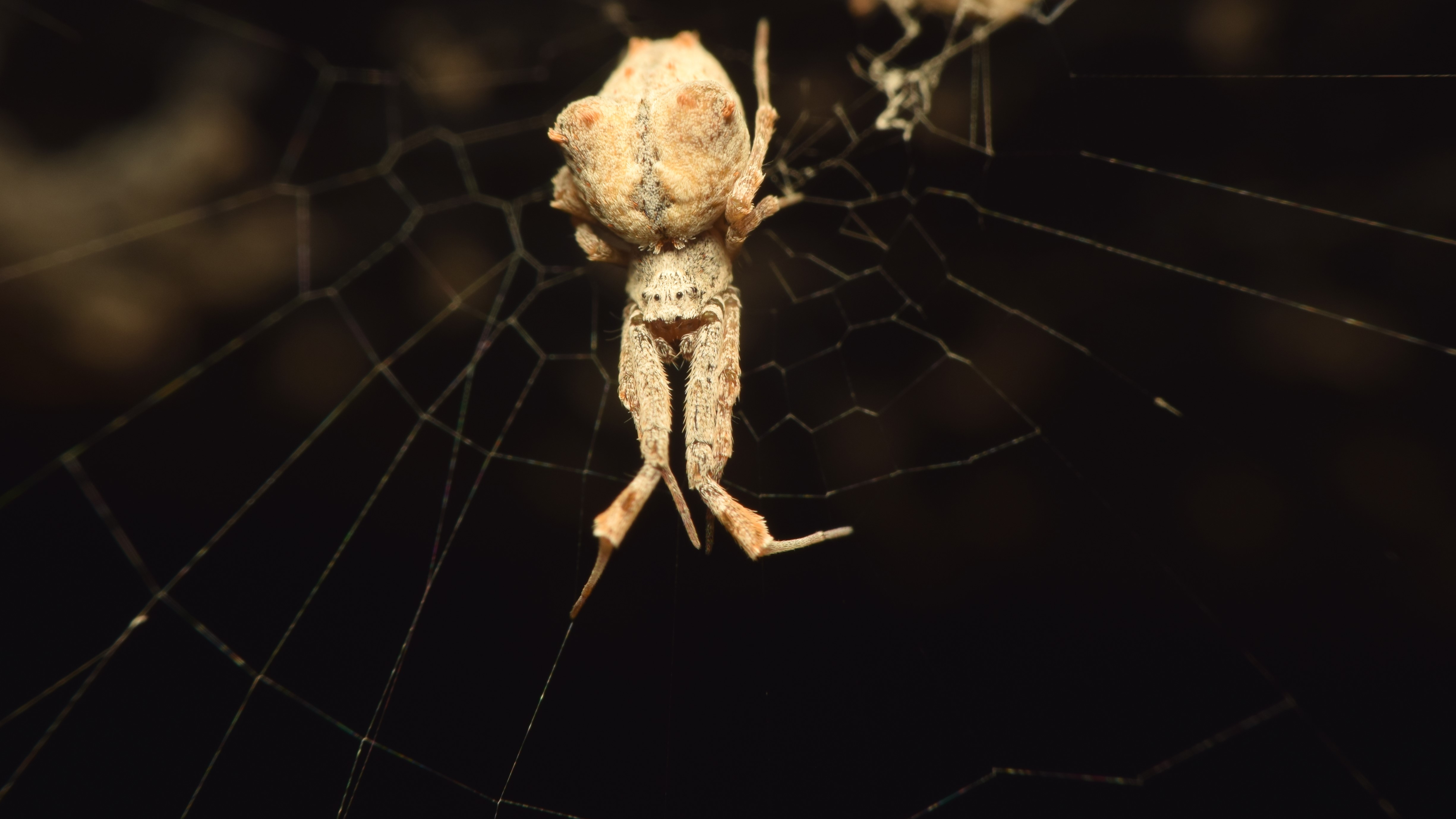Spider with weird feeding behavior appears to kill prey by dousing it with toxic digestive fluids
Spiders in the Uloboridae family wrap their prey in copious amounts of silk and cover them in toxic fluids before starting their feast.
Fuzzy, long-legged spiders may attack their prey with an ingeniously gruesome tactic — by covering them in toxic digestive fluids.
Unlike most other spiders, feather-legged lace weavers (Uloborus plumipes) don't have venom-producing glands or a way to inject their prey with toxins through their fangs. Instead, these spiders seem to produce neurotoxins in their gut, which may help explain their unusual hunting strategy of dousing their victims in fluids from their digestive system, researchers have discovered. The findings were posted as a non-peer-reviewed preprint on BioRxiv on June 28.
"It really looks like there's something in these digestive fluids that kill the prey,” which could be the toxins found in this study, co-author Giulia Zancolli, an evolutionary biologist at the University of Lausanne in Switzerland, told Live Science.
When most spiders trap an insect in their web, they inject it with venom from their fangs to paralyze it. They then cover each bite with digestive fluids to help break the insect down before consuming it.
But spiders in the Uloboridae family, such as feather-legged lace weavers, wrap their victims in a copious amount of silk — sometimes more than hundreds of feet of it — before covering them in fluids and eating them.
Related: What is the deadliest spider in the world?
While scientists already knew about this unusual behavior, they weren't exactly sure how the victims actually died, the new paper said.
Get the world’s most fascinating discoveries delivered straight to your inbox.
To investigate, Zancolli and her colleagues extracted RNA — a cousin to DNA — from different parts of feather-legged lace weavers. RNA can contain instructions for cells on how to make different materials, so by extracting RNA from different areas of the spiders' bodies, the researchers could see what kinds of compounds the animals were producing and where they were being produced. The researchers then looked at the structure of each of those compounds to determine whether they were likely to be toxic.
The team didn't find many potential toxins near the spiders' heads, nor did they find many in their silk. But they did find RNA for multiple potential toxins in the midgut gland (an organ that produces digestive fluids) — indicating that the digestive fluid may be toxic. In addition, the team found no evidence of venom glands or a typical venom-delivery system through the fangs.
The team didn't actually examine what was in the digestive fluid itself. But Zancolli noted that in another recent study, scientists did find toxins in an Uloborus digestive system.
This discovery could show that while spiders in the Uloboridae family may not be able to inject venom through their fangs, they may still be using toxins — in a unique, vomit-y way.

Ethan Freedman is a science and nature journalist based in New York City, reporting on climate, ecology, the future and the built environment. He went to Tufts University, where he majored in biology and environmental studies, and has a master's degree in science journalism from New York University.



